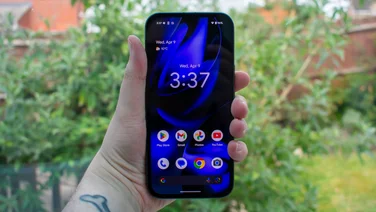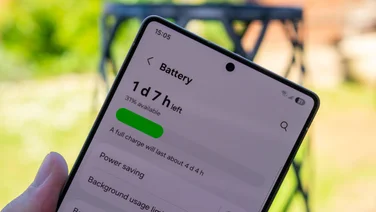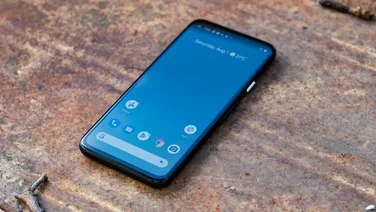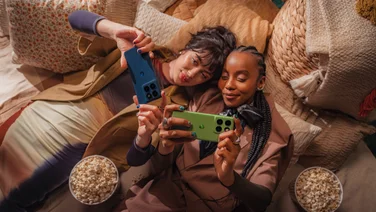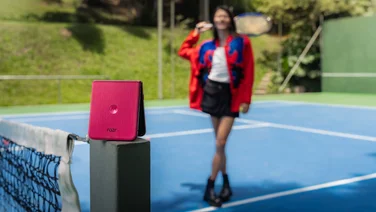To help us provide you with free impartial advice, we may earn a commission if you buy through links on our site. Learn more
- Nubia Redmagic 8 Pro review: What you need to know
- Nubia Redmagic 8 Pro review: Price and competition
- Nubia Redmagic 8 Pro review: Design and key features
- Nubia Redmagic 8 Pro review: Display
- Nubia Redmagic 8 Pro review: Performance and battery life
- Nubia Redmagic 8 Pro review: Software
- Nubia Redmagic 8 Pro review: Cameras
- Nubia Redmagic 8 Pro review: Verdict


























- Appealing new design
- Rapid performance
- Epic battery life
- Display slightly dim in day-to-day use
- UI still not the best
- Dreadful selfie camera
For a couple of years now, Nubias Redmagic sub-brand has supplied the best value gaming phones on the market. While the Asus ROG phone range might be the biggest and best in this particular smartphone niche, the likes of the Redmagic 6S Pro and 7 Pro have provided unbelievable performance per pound.
With the Redmagic 8 Pro, the brand has leaned into its core strengths, worked on its weak points and wrapped it all up in a striking new design. Even if youre not a particularly avid gamer, this is one of the most powerful sub-£600 phones on the market.
Its fair to say that the Redmagic 8 Pro is another top-notch gaming phone, but the intriguing development here is a hint of refinement, among all of the nerdy specs.
Nubia Redmagic 8 Pro review: What you need to know
CPU and GPU power matters more in a gaming phone than any other, which is why the Redmagic 8 Pro goes all out with the latest Snapdragon 8 Gen 2 chip from Qualcomm. This is the same chip as youll find in the OnePlus 11, but for £150 less.
Nubia has paired this with super-fast LPDDR5x RAM and a meaty fan-assisted cooling system, which means it pushes performance further and longer than what non-gaming phones are usually capable of. Talking of stamina, Nubia has given its latest phone more than most with a huge 6,000mAh battery.
Dedicated remappable gaming trigger buttons make a return, supplying a crucial gaming edge to the phone. New this time is a blockier design that gets impressively close to being bezelless, and with no selfie notch to get in the way either.
The Redmagic team has even found the time to address criticisms of its camera tech, with a much more competitive main sensor ensuring a baseline of respectable snaps in most conditions.
READ NEXT: Best mid-range smartphone
Nubia Redmagic 8 Pro review: Price and competition
The key attribute of any Redmagic phone and what encourages us to excuse their many rough edges and gauche flourishes is the sheer double-take-inducing value of the thing.
In the Redmagic 8 Pro, youre getting a top-specced (in most of the ways that count) Android phone at a starting price of just £579. Thats for 12GB of RAM and 256GB of storage, too, so I would hesitate to call this model the runt of the litter.


























Splashing out £709 will snag you 16GB of RAM and 512GB of storage. For the vast majority of people even avid gamers this step-up model shouldnt prove necessary.
We all await news of the Asus ROG Phone 7 range, which will likely be the biggest gaming phone launch of 2023. For now, the Asus ROG Phone 6D costs significantly more at £799, while the Asus ROG Phone 6 costs £899.
Nubia Redmagic 8 Pro review: Design and key features
Design isnt typically the area in which a gaming phone tends to excel, unless you happen to like gaudy RGB lighting and a chassis that looks like it was built to survive the vacuum of space.
The Redmagic 8 Pro is sleeker than most gaming phones, however. Thats a strange thing to say about a phone thats 8.9mm thick and weighs 225g, but its all about aesthetics in this instance. The Nubia has a blocky Sony Xperia-like approach to its design, ditching the curves of last years model. Theres something almost stealthy about it, especially if you go for the cheaper Matte version, rather than the signature transparent Void model that I have here.


























I prefer the more subtle look of the cheaper option, but the Void model certainly makes more of an impression. A partially transparent rear panel exposes the cooling fan, which also features RGB lighting when in action. You can also switch on RGB lighting behind the Redmagic branding and text pointing to the phones virtual trigger buttons, should you really wish to push the boat out this can be handy for notifications.
More impressive than the back of the phone, however, is the front, where Nubia has implemented what it calls the industrys first ultra-narrow bezel flexible full screen. In other words, this is a display with very minimal bezels (it has a 93.7% screen-to-body ratio) and no visible notch, courtesy of an in-display selfie camera.
I never thought it would be a gaming phone that did it, but the Redmagic 8 Pro gets closer to the all-screen ideal than any other phone Ive ever used.
Strictly speaking, Nubias bold design approach isnt all that gamer-friendly. The sharp edges and flat rim arent particularly comfortable during extended gaming sessions, especially as this is one of the heavier phones in the Redmagic family.
In addition to being less comfortable to hold, the lack of any real forehead or chin means that you dont get the twin front-firing speakers of the Asus ROG Phone and Lenovo Legion Phone lines. The earpiece serves this function just fine, but the bottom-mounted speaker is a little too easy to block while gaming. Still, both sound loud and clear enough.
READ NEXT: Best Android phone
Nubia Redmagic 8 Pro review: Display
Aside from its edge-to-edge design, Nubia hasnt changed much with the Redmagic 8 Pros display. Its another large 6.8in AMOLED number, albeit with a slightly more pixel-packed (though still technically FHD+) resolution of 2,480 x 1,116.
Like the Redmagic 7S Pro before it, the phone drops from the dizzy heights of 165Hz (as seen in the Redmagic 7) to a 120Hz refresh rate. While hardcore gamers might grumble about this, the simple truth is that most mobile games dont support such sky-high frame rates to begin with.


























More of a disappointment in my book is that Redmagic hasnt addressed previous criticism and bumped up the brightness at least not when you turn autobrightness off. While Nubia claims that it gets to a very respectable peak brightness of 1,300cd/m², I found that it would hit a much less dazzling 328cd/m² in the Vivid display mode with autobrightness (and the closely linked Sunlight mode) turned off.
The screen isnt as bad when it comes to colour accuracy, however. The most accurate display mode for our usual suite of sRGB-focused testing appeared to be (unsurprisingly) the dedicated sRGB mode, where the Redmagic 8 Pro hit an sRGB gamut coverage of 86.5% and a volume of 87%, with an average Delta-E score of 1.55.
Nubia Redmagic 8 Pro review: Performance and battery life
Nubia has equipped the Redgmagic 8 Pro with a Snapdragon 8 Gen 2 processor, which is reportedly 42% faster and 50% more power-efficient than the chip used in the phones predecessor. The company has paired this chipset with super-fast LPDDR5x RAM, and plenty of it, too you can specify either 12 or 16GB.

CPU-focused Geekbench 5 scores are extremely high here, with an average single-core score of 1,504 and a multicore score of 5,174. Thats well ahead of previous Redmagic phones, as you would expect, but its also well ahead of the OnePlus 11, a non-gaming phone that uses the same chip.

GPU-based benchmark scores are also very impressive, though broadly in line with what weve seen so far from the Snapdragon 8 Gen 2 in other phones. In practical gaming terms, console racer Wreckfest runs faultlessly on maxed-out settings, maintaining close to a solid 60fps. Genshin Impact is a similarly strong maxed-out performer.

Perhaps more impressive than the Redmagic 8 Pros performance is its stamina improvement. I criticised the Redmagic 7 for rolling back to a decidedly gamer unfriendly 4,500mAh cell, while even the Redmagic 7S Pros 5,000mAh battery wasnt all that large for a gaming phone. Thankfully, Nubia has listened to these grumbles and fitted its latest gaming phone out with a chunky 6,000mAh cell. Its a large factor behind the phones weight gain, but its a worthwhile trade-off. This is a phone with genuine two-day potential if your usage is moderate, while it will easily cope with a more intensive day of games and media consumption with room to spare.
In our usual looping video test, the Redmagic 8 Pro lasted 29hrs 22mins. Thats almost 14 hours more than the Redmagic 7, and more than an hour on top of the OnePlus 11. As that latter result indicates, the Snapdragon 8 Gen 2 is as important as the bump up in battery capacity here.
Once again, charging is handled by a bundled 65W brick that can get you from empty to 100% in a respectable 40 minutes.
READ NEXT: Best phone battery life
Nubia Redmagic 8 Pro review: Software
Typically with these gaming phones, software is a bit of a weak point. The same urge to tinker and pimp with RGB lighting and cooling fans also tends to lead to some rather gaudy (not to mention buggy) UIs.
The Redmagic 8 Pro is no exception to this, though Redmagic OS 6 running on Android 13 is slightly cleaner and more pleasant to use out of the box than before, at least after a few corrective updates. Gone are the hideous screen-filling widgets of previous models, leaving a relatively normal-looking Android homescreen in their wake. You can add them, but theyre not there by default.
I didnt encounter any random instances of Chinese text or calamitous bugs, either, both of which used to be an issue.
With that said, the somewhat odd NextWord Browser remains prominently positioned on the main app bar. This bizarre web-browser-cum-translation-app-cum-newsfeed doesnt really do any of those things especially well, and will likely be the first thing you replace. Elsewhere, notifications still dont seem to use the space allotted to them by that huge display particularly well. Text seems curiously squished in.
We must remember that this is all (or at least predominantly) about the games, and Nubias gaming-specific software is as powerful as ever. With the flick of a physical switch on the right-hand edge, the phone will enter a custom landscape-oriented gaming interface that lets you add games and apps for automatic acceleration, adjust the sensitivity of the touchscreen (up to a 960Hz touch sampling rate), crank up the performance, and more.
Nubia Redmagic 8 Pro review: Cameras
While the Redmagic 8 Pro wont be topping any best camera lists, its a notable step up from previous phones in the range. In particular, Nubia has replaced its bog-standard 64MP main image sensor with a 50MP Samsung GN5, which is the same lead sensor as you will find in the Samsung Galaxy S22 and iQOO 11.
This main camera produces shots that look pleasingly detailed in good lighting, with nicely balanced colours and solid dynamic range. Low-light shots arent quite so robust, though. They get plenty bright to a somewhat fake-looking degree, in fact but lack the crispness that a normal phone with OIS and advanced algorithms can bring.


























The rest of the camera provision screams mid-range, with an 8MP ultrawide and a pointless 2MP macro. The quality of that main sensor does cast an unflattering light on the ultrawide, which produces wide-angle pictures that look incredibly drab and fuzzy by comparison.
The 16MP second-generation under-display selfie cam might stay impressively hidden, but its not much cop as a camera. The fact that its simply not getting the same light as a regular selfie camera means that you get extremely soft, questionably exposed shots and slightly odd-looking skin tones.
Nubia Redmagic 8 Pro review: Verdict
In a smartphone market where most manufacturers seem content to coast, Nubia and its gaming sub-brand have dared to push things forward. Not only is the Redmagic 8 Pro another great phone for gamers, with significant improvements to power and battery life, its also a much better phone to use day to day compared to previous models.
The new design, while arguably less gamer-friendly, is much easier on the eye, while the bezelless and notchless display is genuinely striking to behold. Significant improvements have been made with the phones main camera, too, and the custom UI is more legible and less cluttered.
Its still not a phone I would recommend to non-gamers, but the Redmagic 8 Pro is the most mainstream phone in the range yet, and a total bargain when you consider the level of performance youre getting for such mid-range money.

